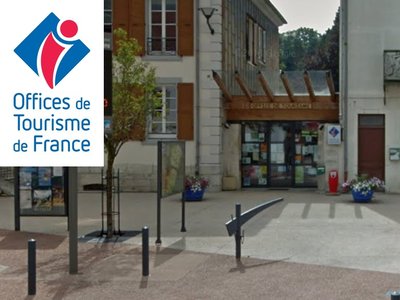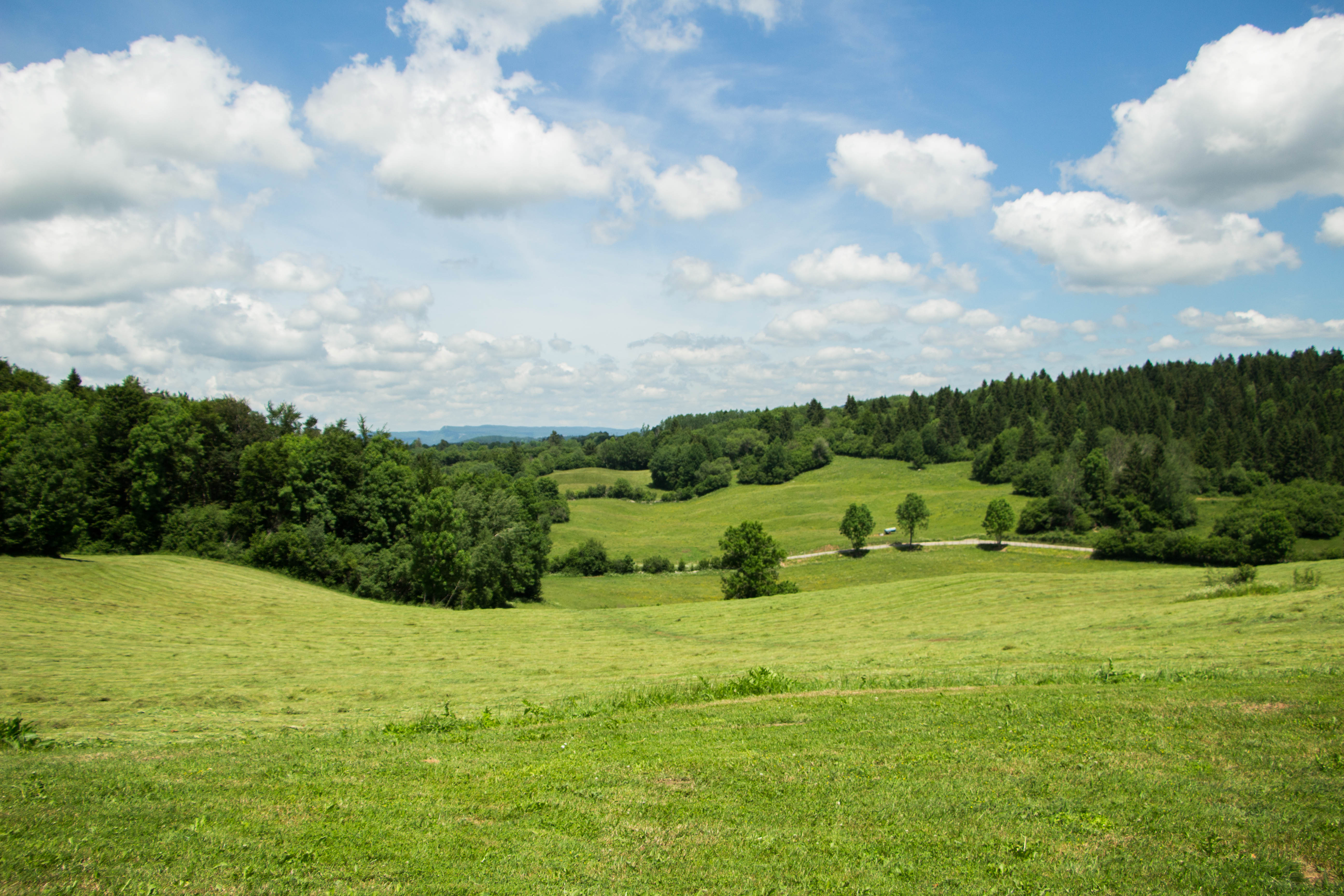
The Source
Looking for a change of scenery? Let yourself be seduced by this peaceful circuit that will lead you through the typical Grandvaux landscapes, where forests, pastures and hedges blend into the soft and peaceful curves of a valley so large that it gives Saint-Laurent-en-Grandvaux a striking resemblance to Canada.
7 points of interest
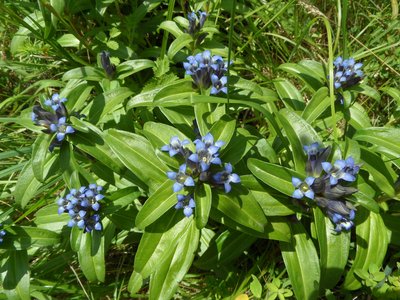
Gentiane croisette - PNRHJ / Julien Barlet FaunaOnce upon a time, there was a butterfly, a flower and an ant...
In this combe, there are several hundreds of Star Gentian plants - a vulnerable plant in Franche-Comté. This plant is home to a protected species of butterfly, the preservation of which is considered a priority: the mountain Alcon blue.
This butterfly’s ecology is remarkable. The caterpillar develops in the Star Gentian’s inflorescences, and sometimes in those of the great yellow gentian. After eating the follower, it falls to the ground, where it is cared for by a specific species of ant, which carries it back to its anthill where it will spend the autumn, winter and spring with shelter and food. During this time, the caterpillar releases a smell that tricks the ants, protecting it from any attacks and convincing the little workers to feed it. Butterflies emerge at the end of the spring and must quickly leave the anthill.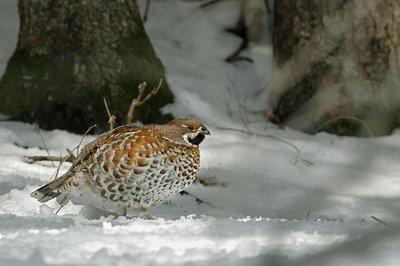
Gélinotte des bois - GTJ / Jean-Lou Zimmermann FaunaThe Hazel Grouse, a very discreet bird
Barely bigger than a dwarf hen, the Hazel Grouse’s silhouette is rather large, with short legs and a short tail. Its plumage is subtly shaded, and enables it to camouflage itself in its environment. In spring, it feeds on the buds of hazel trees or other shrubs covering the forest floor. Very discreet, you may hear it quickly fly away on your arrival. Be careful, as from June, a subject that does not fly away may be looking to protect its young. Discreetly move away.
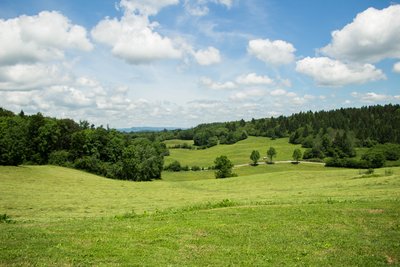
Vue des Jeannez sur les forêts du Grandvaux - (PNRHJ / N.VERJUS) Natural environmentsMixed fir, spruce and beech forests
In the Jura, the montane zone is located at an altitude between 900 and 1700 metres. In this area, forests are mostly comprised of fir trees, spruces and beech trees. Beech, which is still sometimes regionally referred to as “fayard”, is well suited to the mountainous climate. This tree produces beechnuts, which are eaten by game. The hard wood of the beech tree used to be often used by “boisseliers”, wood turners. Today, it is excellent for use as firewood.
In the High-Jura, these mixed forests are usually managed according to a selection system. Unlike plantations, this method of management allows trees of different species and ages to grow on the same site, thereby ensuring increased biodiversity.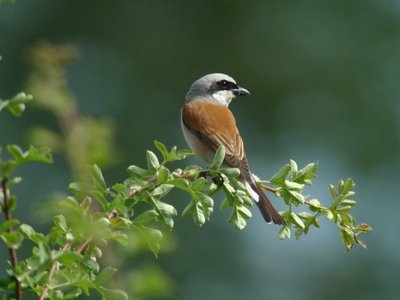
Pie grièche écorcheur mâle - Fabrice Croset FaunaThe red-backed shrike
Similar in size to a sparrow, males and females are differentiated mainly from their plumage. While the male has a reddish-brown upper part and a tinged pink underpart with a light grey head and a contrasting black stripe through the eye; the female’s colouring is much darker, brown, and her underparts are vermiculated.

Lisières - PNRHJ / Nina Verjus Natural environmentsHedges and the edge effect
Combes and fields surrounded by hedges and spinneys, trees scattered in the middle of pastures: these are all elements that make-up what is referred to as the “edge effect”. This term is used to describe the remarkable diversity in which open-environment species, forest-environment species and species that thrive in the areas in between open landscapes and forests meet. This diverse vegetation has many surprises in store along the sides of pathways and is highly useful for farming: it provides protection against prevailing winds, limits surface runoffs and provides shelter for the crop-pest predators (such as foxes who feed on voles).
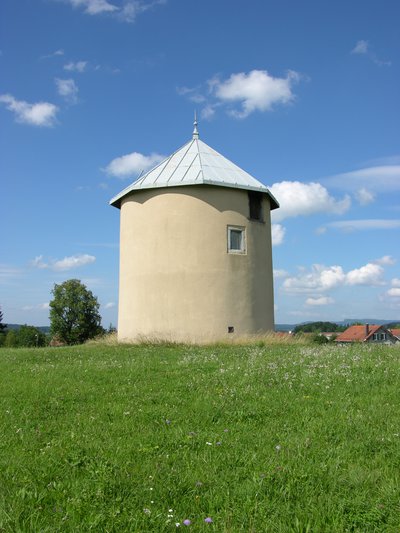
Chapelle de Salave - PNRHJ / Gilles Prost History & HeritageThe Salave chapel
Located west of Saint-Laurent, near the “route de Lons-le-Saunier”, the chapel draws the eye due to its windmill shape - only its vanes are missing. It appears that this structure was once a mill for the hamlet of Voisinal de Joux. Its tapered roof, mounted on wheels is set atop its eight-metre high tower. Its vanes were broken during a hurricane in 1829. Another chapel was built on top of its remains as early as 1850. Although in bad condition since a fire in 1907, it bears the French flag that marks the border set during the second world war. Today, it is home to Marie-Thérèse, a bell cast in 1953 by the Paccard bell foundry in Annecy.
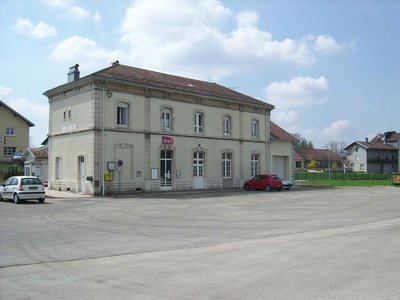
gare de Saint-Lauren,t-en-Gtandvaux - (PNRHJ / M.LAPERRIERE) History & HeritageThe station of Saint-Laurent-en-Grandvaux
The Andelot-Champagnole general interest line was extended to St-Laurent-en-Grandvaux, and the Compagnie PLM station was opened in 1890. The Andelot-La Cluse line - which required the construction of a number of structures, including 18 viaducts and 36 tunnels - was completed in 1912. This was also the date when travelling by stagecoach stopped being practiced between St-Laurent-en-Grandvaux and St-Claude, as ensured by Louis Charnu. (PNRHJ - Collection patrimoine, “Heritage collection”)
Description
From SAINT-LAURENT'S CENTRE, head up the village along "route de Genève" until you come to the roundabout and Saint-Laurent - the ridge (yellow waymarking).
The trail cuts across the parking lot and heads into the pasture. It takes a right-turn and ascends the grassy slope following along the Campsite. Continue through the pasture until you come to a path suitable for vehicles (former tram line) and follow this path until you reach les Maisonnettes.
The path ascends to the right and passes under the railway tunnel. Continue your route through the pasture until you reach les Pierres. Cross the road and continue on the path at the bottom of the combe that will lead you to En Fouradon and then Les Cloisons.
The forest path heads to the right, past the source (metallic basin). At a crossroads, take the uphill path to the left towards les Jeannez, until you reach the hamlet.
Then take the road opposite you towards les Poncets, located just below the D437.
The path branches off to the right and continues on to Salave de Vent via "rue du Vieux Chalet" (former cheese dairy to the left recognisable from the small loophole windows on its northern facade). Return to the D 437, and follow it around to the right for 20 m.
Turn right to cut through the hamlet. A wide path then follows along an allotment before opening out onto "Chemin de l’œuf".
"rue du Vatican" joins up with the D 678 and crosses the level crossing. Turn right immediately to head towards the train station. Return to the village centre via "rue Rouget de Lisle".
- Departure : Saint-Laurent-en-Grandvaux
- Arrival : Saint-Laurent-en-Grandvaux
- Towns crossed : Saint-Laurent-En-Grandvaux and Grande-Riviere Chateau
Forecast
Recommandations
This trail passes through private property pastures with livestock and forest paths. To respect the owners and farmers granting you passage, and for the security of livestock and wild fauna, we ask that you remain on the waymarked paths. Use the adapted passageways to get across fencing and be sure to close gateways behind you. Lastly, please keep your dog on a lead if you have one.
Wild flowers are beautiful, they may be rare and protected and often wilt quickly. Do not pick them! They will delight the next hikers.
In case of forest works (felling, skidding, etc.), for your safety, know when to stop and turn around.
Information desks
Tourist information centre - Haut-Jura Grandvaux
7 place Simone Veil, 39150 Saint-Laurent-en-Grandvaux
Transport
To visit and get about in the High-Jura, visit www.reshaut-jura.fr, the eco-mobility portal listing all means of transport within the Park.
Access and parking
10 km north of Morez via the N5, before accessing the town centre via the D 678
Parking :
Report a problem or an error
If you have found an error on this page or if you have noticed any problems during your hike, please report them to us here:

